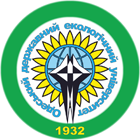Authors: Yu.А. Kruglyak, L.S. Kostritskya
Year: 2015
Issue: 19
Pages: 155-169
Abstract
General issues of electronic conductivity and the causes for the current flow, role of electrochemical potentials, Fermi functions, and Fermi window for conduction are discussed, as well as there given detailed description of the Landauer elastic resistor model, different transport regimes from ballistic to diffusion and in between, conductivity modes, and transmission coefficient in the frame of the «bottom – up» approach of modern nanoelectronics. Generalized model of electron transport in the linear response regime developed by R. Landauer, S. Datta, and M. Lundstrom with application to the resistors of any dimension, any size and arbitrary dispersion working in ballistic, quasi-ballistic or diffusion regime is summerized.
In summary, the Landauer equation for the conductivity describes the electron transport in the conductor from the very general positions. The conductivity is proportional to the fundamental constants q and h, which determine the quantum of conductance, associated with contacts. The conductivity depends on the number of modes of conductance and transmission coefficient, representing the probability that an electron with energy E injected by one contact to reach another contact. Conductivity we finally find by integrating the contributions from all modes of conduction. The equations valid for 1D, 2D and 3D conductors for ballistic nanoreactors as well as for massive conductors.
Tags: elastic resistor fashion conductivity; Nanophysics and Nanoelectronics; transmittance
Bibliography
- Mitin V.V, Kochelap V.A, Stroscio M.A, Introduction to Nanoelectronics: Science, Nanotechnology, Engineering, and Applications. Cambridge: Cambridge University Press, 2012.
- Hoefflinger B. (Ed.), Chips 2020: A Guide to the Future of Nanoelectronics. Berlin: Springer-Verlag, 2012.
- Martines Dzh.M., Marin-Palma R.Dzh., Agullo-Rueda F. Nanotechnologii dlya mikro- i optoeletrtroniki [Nanotechnology for mi-cro- and optoelectronics]. Moscow: Tekhnosfera, 2007.
- Dragunov V.P., Neizvestnyy I.G., Gridchin V.A. Osnovy nano-elektroniki [Fundamentals of nanoelectronics]. Moscow: Logos, 2006.
- Drude P. Zur Elektronentheorie der metalle Ann. Physik., 1900, vol. 306, no.3: pp.566, doi:10.1002/ andp.19003060312.
- Drude P. Zur Elektronentheorie der Metalle”:ІІ. Teill. Galvanomagnetische und thermomagnetische Effecte. Ann. Physik., 1900, vol. 308, no.11, pp.369 , doi: 10.1002/andp.19003081102.
- Ashkroft N., Mermin N. Fizika tverdogo tela [Solid state physics]. Moscow: Mir,1979.
- Smit R.H.M., Noat Y., Untiedt C., Lang N.D., van Hemert M.C., van Ruitenbeek J.M. Nature, 2002, vol.419, no. 3, pp.906.
- Fuechsle M., Miwa J.A., Mahapatra S., Ryu H., Lee S., Warschkow O., Hollenberg L.C.L., Klimeck G., Simmons M.Y., Nature Nanotech., 2012, vol. 7, pp. 242.
- Lundstrom M., Datta S. Electronics from the Bottom Up: A New Approach to Nanoelectronic Devices and Materials. Available at: http://www.nanohub.org/topics/ElectronicsFromThe BottomUp.
- Lundstrom M. Near-Equilibrium Transport: Fundamentals and Applications. Available at: http://www.nanohub.org/resources/11763.
- Datta S. Lessons from Nanoelectronics: A New Perspective on Transport. Hackensack, New Jersey: World Scientific Publishing-Compan 2012. Available at: http://www.nanohub.org/courses/FoN1.
- Lundstrom M., Jeong C. Near-Equilibrium Transport: Fundamentals and Applications. Hackensack, New Jersey: World Scientific Publishing Company, 2013.
- Landauer R. Spatial variation of currents and fields due to localized scatterers in metallic conduction. IBM J. Res. Dev., 1957, vol. 1, no.3: pp. 223-231.
- Landauer R. Electrical resistance of disordered one dimensional lattices. Philos. Mag.,1970, vol. 21, pp. 863-867.
- Landauer R. Electrical resistance of disordered one dimensional lattices. J.Math. Phys.,1996, vol. 37, no. 10, pp. 5259.
- Datta S. Electronic Transport in Mesoscopic Systems. Cambridge: Cambridge University Press, 2001.
- Datta S. Quantum Transport: Atom to Transistor. Cambridge: Cambridge University Press, 2005.
- Lundstrom M. Nanoscales Transistors. Available at: http://www.nanohub.org/courses/NT.
- Pierret R.F. Semiconductor Device Fundamentals. Reading, MA: Addison–Wesley, 1996.
- Kruglyak Yu,A., Kruglyak N.E. Vìsn. Odes. derž. ekol. unìv. – Bulletin of Odessa state environmental university, 2012, vol. 13, pp. 207- 218. (In Russian).
- Jeong C.,.Kim R, Luisier M., Datta S., Lundstrom M. Appl.Phys J., 2010, no. 107, pp. 023707.
- Howard C. Berg. Random walks in biology. Princeton: Princeton University Press, 1993.
- Kruglyak Yu,A., Kruglyak N.E. Uroki nanoelektroniki 2. Model uprugogo rezistora i novaya formulirovka zakona Oma v kontseptsii “snizu – vverkh” Fizich.obrazov. v vuzakh – Physics in Higher Education, 2013, vol. 19, no 2 – 167p. (In Russian)..



